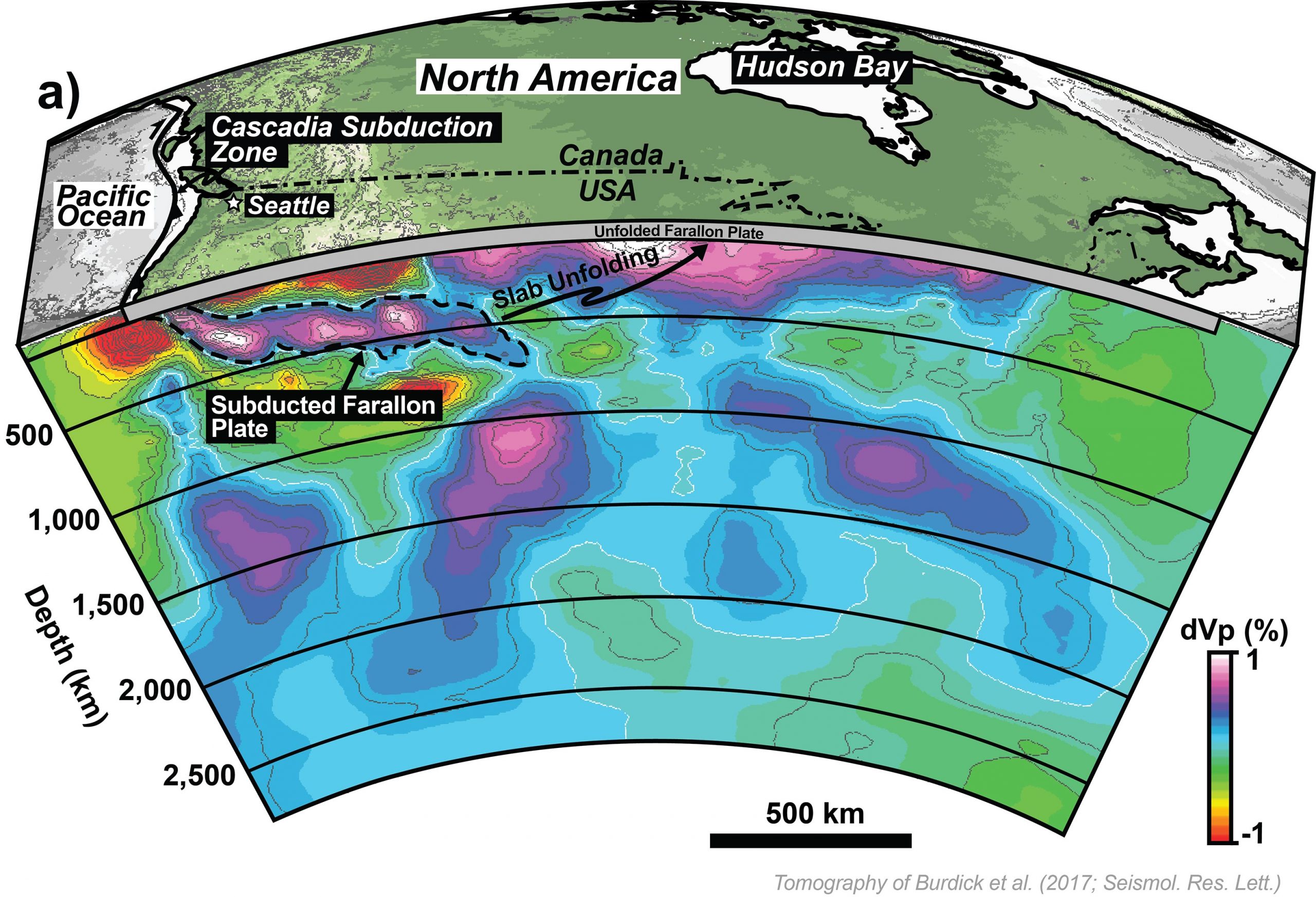
(l-r) Jonny Wu, assistant professor of geology in the UH Department of Earth and Atmospheric Sciences and Spencer Fuston, a third-year geology doctoral student, applied a technique developed by the UH Center for Tectonics and Tomography called slab unfolding to reconstruct what tectonic plates in the Pacific Ocean looked like during the early Cenozoic Era.
The existence of a tectonic plate called Resurrection has long been a topic of debate among geologists, with some arguing it was never real.
A 3D block diagram across North America showing a mantle tomography image reveals the Slab Unfolding method used to flatten the Farallon tectonic plate.
By doing this, Fuston and Wu were able to locate the lost Resurrection plate.
Credit: Spencer Fuston and Jonny Wu, University of Houston Dept.
“Volcanoes form at plate boundaries, and the more plates you have, the more volcanoes you have,” said Jonny Wu, assistant professor of geology in the Department of Earth and Atmospheric Sciences.
Wu and Spencer Fuston, a third-year geology doctoral student, applied a technique developed by the UH Center for Tectonics and Tomography called slab unfolding to reconstruct what tectonic plates in the Pacific Ocean looked like during the early Cenozoic Era.
The rigid outermost shell of Earth, or lithosphere, is broken into tectonic plates and geologists have always known there were two plates in the Pacific Ocean at that time called Kula and Farallon.
A 3D block diagram across North America showing a mantle tomography image reveals the Slab Unfolding method used to flatten the Farallon tectonic plate.
Credit: Spencer Fuston and Jonny Wu, University of Houston Dept.
Using 3D mapping technology, Fuston applied the slab unfolding technique to the mantle tomography images to pull out the subducted plates before unfolding and stretching them to their original shapes.
“When ‘raised’ back to the earth’s surface and reconstructed, the boundaries of this ancient Resurrection tectonic plate match well with the ancient volcanic belts in Washington State and Alaska, providing a much sought after link between the ancient Pacific Ocean and the North American geologic record,” explained Wu.
Reference: “Raising the Resurrection plate from an unfolded-slab plate tectonic reconstruction of northwestern North America since early Cenozoic time” by Spencer Fuston and Jonny Wu, 19 October 2020, GSA Bulletin.
Note: Animation below shows the subduction of Kula, Farallon and Resurrection tectonic plates in western North America 60 million years ago to present day.